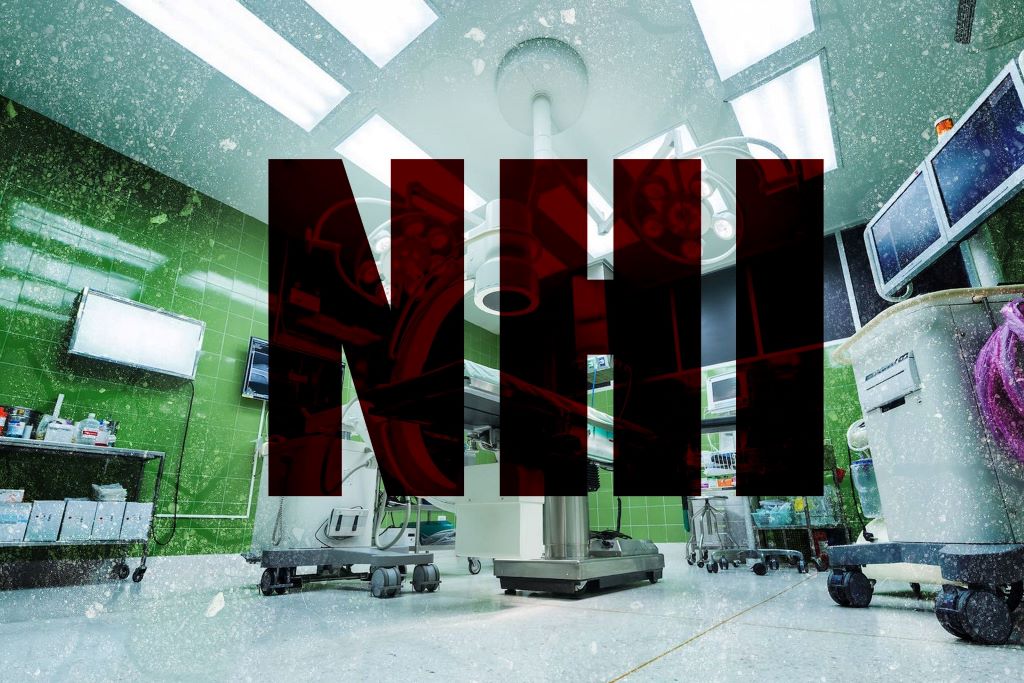On Which Legal Arguments Are the NHI Court Cases Set to Turn? Part 1: Affordability

By Jesse Copelyn
Since President Cyril Ramaphosa signed the NHI Act into law last year in May, eight different groups have challenged it in court. One common argument is that it is irrational and unreasonable to restructure the health system when there’s no money to do so. In this feature, Spotlight dissects how the argument is being applied, and whether it has any chance of success.
Earlier this month, the Western Cape Government filed papers with the Constitutional Court challenging the validity of the National Health Insurance (NHI) Act. In doing so, it became the eighth group to litigate against the Act, which aims to provide the same state-funded medical cover for all South Africans.
Not only are there now numerous litigants, each with their own distinct set of arguments, but some have also launched multiple applications, challenging different steps that led to it becoming law.
In this context, figuring out on which legal questions the future of the NHI Act will ultimately turn is difficult. Thus, Spotlight combed through some of the founding affidavits and spoke with legal experts to get a sense of the arguments litigants are betting on. A first key argument relates to the affordability of the scheme – in part two of this series we will turn to whether the NHI leads to an unreasonable regression in health services for certain groups.
Rationality and reasonability
Section 1(c) of the Constitution of the country holds that South Africa is a state governed by the rule of law. One of the implications of this is that governments can’t simply introduce laws arbitrarily without any justification. Instead, when an Act is passed, there has to be some aim behind that legislation, and some logical reason as to why passing it would advance that aim.
In other words, laws have to be rational.
Not only this, but Section 27 of the Constitution states that when it comes to the advancement of certain social rights like healthcare, government must act “reasonably”. This is a more demanding requirement than “rationality”. It doesn’t just require that an Act be logically related to its purpose but that it is practically feasible, and that it meets a range of other criteria (for instance, costs and benefits have to be fairly weighed).
A central argument of several litigants is that the NHI simply doesn’t meet basic standards of rationality or reasonability. One of the reasons for this, they argue, is that the government is unable to finance the NHI, and thus the Act has no hope of achieving its goals.
There are at least two ways in which this argument is being advanced. The first is as part of a series of applications seeking to invalidate the NHI Act itself. The second is as part of a procedural challenge to President Cyril Ramaphosa’s decision to sign the NHI Act into law. Here, the focus is on the rationality of the President’s decision, rather than the Act.
Challenging the act itself
The first party to take legal action against the NHI was the conservative trade union, Solidarity, which launched its application in the North Gauteng High Court in Pretoria on 24 May 2024.
In its founding affidavit, Solidarity argued that for the NHI to achieve its stated aim of universal access to quality healthcare services, the “requisite level of funding” must be available to establish the NHI Fund and its various mechanisms. But according to Solidarity’s application, it has already been shown that the government is incapable of raising enough tax revenue to support the scheme.
For instance, Solidarity references the position of the Davis Tax Committee, which was a group of experts chaired by Judge Dennis Davis that used to advise the government on how it could raise money to advance various policy goals. In 2017, the committee released a 48-page report on the NHI, which found that the state couldn’t cover the full cost of the NHI unless there was “sustained economic growth”.
Solidarity stated that this, in combination with its own research, showed that the NHI simply can’t be rolled out comprehensively. Thus, there was a “complete absence of a rational relation between the means selected and the objective sought to be achieved”.
Similarly, in February, a separate challenge was brought by the Hospital Association of South Africa (HASA), which argued that the NHI should be set aside because it is “fundamentally unreasonable and therefore unconstitutional”.
HASA’s submission argued that the burden of proof lay with the government to show that the NHI was financially feasible before passing the Act. This is particularly important given that the scheme involves a radical restructuring of healthcare with potentially detrimental knock-on effects for the private sector. The government thus had a duty to show that the scheme could lead to material benefits that justified these harms.
However, HASA argues that “no recent comprehensive and accurate financial feasibility and affordability assessment was conducted” by the government before pushing through the NHI, rendering “the passing of the legislation unreasonable and irrational”.
For its part, the National Department of Health has argued in court papers that trying to work out the full cost of the NHI would be a futile exercise. For instance, the health department’s NHI lead, Nicholas Crisp, filed an affidavit in response to Solidarity which stated that “attempts to conduct a once-off accounting exercise” were “not useful”.
He said: “The outcome of such an exercise is inevitably inaccurate, misleading and does not support informed decision making for reform.” Crisp argued that this was already evident from the “extremely wide range of figures that various parties have claimed to reflect the cost of the NHI in the public domain”.
Instead, Crisp stated that the World Health Organization (WHO) had advised the department to conduct an “ongoing costing approach for specific steps of the NHI implementation process”, which is something they were already doing, he said.
Nonetheless, many of the litigants have pushed back against this, arguing that this approach still leaves us without any evidence that the NHI can be funded in the medium to long term. In its affidavit, HASA argues: “In the context of constrained public finances and very challenging economic conditions… it is wholly irrational to commence the wholesale restructuring of the healthcare sector without long-term costing, and only with short-term piece-meal analysis”.
Challenging the President’s decision
While the above applications have sought to review and set aside the NHI Act itself, a separate set of challenges has instead focused on the decision of Ramaphosa to sign the Bill into law.
Section 79(1) of the Constitution states that if the President “has reservations about the constitutionality of the Bill”, then he should refer it back to Parliament for reconsideration.
If it can be proved that Ramaphosa had good evidence that the NHI may have been unconstitutional, but signed it anyway, then his decision can potentially be overturned by a court. In this case, the NHI wouldn’t be completely invalidated and set aside, but the President’s decision to sign it into law would be. Therefore, the NHI would go back to being a Bill, and would likely need to be reworked by Parliament.

The Board of Health Funders (BHF), which represents medical insurance companies, is one of the litigants taking this approach. In addition, the South African Private Practitioners Forum (SAPPF) has a two-part application challenging both the Act itself and Ramaphosa’s decision to sign it.
Once again, the affordability argument has been central in these cases. In particular, the BHF and SAPPF have both highlighted a number of documents that were sent to Ramaphosa before he signed the NHI Act, which they argue should have caused the President to reconsider whether the Act was affordable.
For instance, the parties note that in 2018, the Office of the Presidency received a letter from the acting director-general of Treasury which expressed several concerns about what was then the NHI Bill. One of them was that the “financial implications are not costed”. As a result of issues such as this, the acting director-general felt “unable to support the bill in the current form submitted to cabinet”.
The BHF affidavit points out that the version of the Bill that Treasury had commented on was “not materially altered” later on. It further states that the letter from Treasury “was before the president when he assented to the NHI Bill and it is unclear at this stage the basis on which the president disagreed with the views of Treasury”.
In order to properly evaluate the rationality of Ramaphosa’s decision, the applications by BHF and SAPPF have been seeking to have the full record of his decision made public. The record refers to any information he would have had before him when signing the bill into law, as well as any minutes of correspondences he had which related to the Act.
The BHF and SAPPF have already made some progress with their case. In May, the North Gauteng High Court in Pretoria ruled that it was able to review Ramaphosa’s decision to sign the NHI Bill into law, and gave the President 10 days to provide the full record of his decision to do so.
Neil Kirby, who heads the healthcare and life science practice area at Werksman’s Attorneys, which represents BHF, told Spotlight that after the ruling, “both the [health] minister and the president made application for leave to appeal that judgment which is a process that’s supposed to happen before the original judge. They also then proposed that they appeal directly to the constitutional court.”
He adds: “At this point in time the high court has taken a step back on the basis that the high court wants to wait for the constitutional court via the chief justice to see what to do about those direct applications.”
Thus, until the Chief Justice provides direction, Kirby says “everything is in limbo”.
In the meantime, the BHF has also launched a separate application at the Constitutional Court, which challenges the public participation process prior to Ramaphosa signing the NHI Act. The focus here is on the rationality and reasonability of Parliament’s consideration of the NHI Bill, which they argue failed to consider input from various parties. As with the other application, the affordability argument plays a role.
Kirby explains: “If you’re sitting in the National Assembly and you’re being asked to vote on a Bill that proposes a significant financial burden on the state in due course and you don’t have the figures in front of you to understand what that burden actually is, then you’re not in a position to say that such a thing is a good idea… It’s grounds for review based on the reasonableness and the rationality of [that] decision”.
How powerful is the affordability argument?
According to Kirby, the argument about affordability is by no means the only strong line of attack that the BHF possesses against the NHI, but it is easily one of the most powerful.
According to Dr Larisse Prinsen, a medico-legal expert at the University of the Free State, who is not involved in the litigation, the affordability argument is more likely to be successful as a line of attack against the President’s assent to the legislation (as with the BHF’s case). Though it would be unlikely to suffice on its own, she says.
Prinsen explains that if the “record shows that the President ignored massive red flags, such as the warnings by the [Davis Tax Committee] and Treasury regarding concerns about the sustainability of the NHI, unresolved costing, provincial power concerns etc., this could support the claim of irrationality in the decision-making process”.
However, she says when it comes to the legal challenges to the Act itself, the argument about affordability is less likely to be successful.
“Courts often defer where a law creates a framework with a phased roll-out and which leaves fiscal choices to later money bills,” she says. “The government might use annual appropriations or future revenue decisions or phased progressive implementation to argue the NHI scheme is in fact capable of reasonable realisation over time. This means that outright invalidation on ‘infeasibility’ alone is a harder battle to fight.”
Similarly, another attorney who is also independent of the litigation, told Spotlight that rationality reviews are typically aimed at procedural steps in the formation of an Act. Thus, the challenge to the President’s decision to sign the law, would likely carry more weight, he said.
Note: In part two of this series, we will turn to whether the implementation of NHI, as set out in the NHI Act, will lead to an unreasonable regression in health services for certain groups.
Republished from Spotlight under a Creative Commons licence.
Read the original article.





